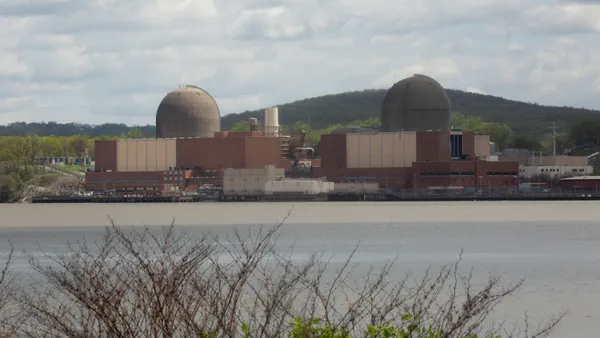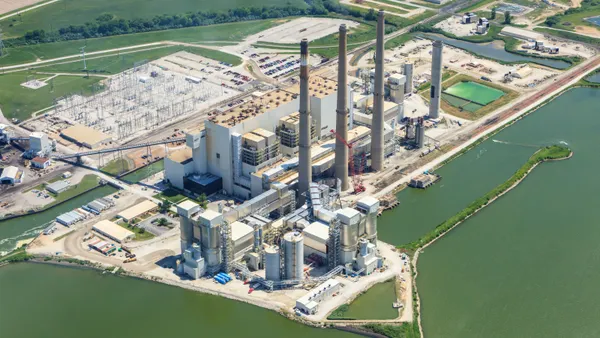Dive Brief:
- The declining use of coal for power generation helped the United States reduce its carbon dioxide emissions by 12% below 2005 levels last year, according to the U.S. Energy Information Administration.
- EIA cited "decreased use of coal and the increased use of natural gas for electricity generation" as the primary drivers of the decreases, following two years of increases.
- Energy-related CO2 emissions have been declining for a decade, from 6,000 million metric tons in 2005 to about 5,300 last year.
Dive Insight:
The changing power mix has been helping the energy sector reduce carbon emissions for years now. But following two years of increases in CO2, the 2015 decrease was a welcome change – though still leaving emissions above their 2012 levels.
EIA said reductions in CO2 emissions were spread out among the different end-use sectors "in proportion to the share of total electricity sales to each sector," and that overall, the fuel-use changes in the power sector have accounted for 68% of the total energy-related CO2 reductions from 2005 to 2015.
While coal was still the dominant generation fuel last year, cheap natural gas has almost changed the typical balance. Gas-fired power plants generated more energy than coal did in seven months last year, and the final generation output was remarkably close: 1,356,057 GWh for coal, and 1,335,068 GWh for gas.
The decrease in CO2 emissions is even more impressive given the growing economy. EIA noted that two of the largest factors in year-to-year fluctuations of energy-related CO2 emissions are the economy and the weather. "The largest annual decline in energy-related CO2 emissions in the past decade occurred in 2008–09 during the recession," EIA said, but "overall, the U.S. economy has grown even as energy-related CO2 emissions have fallen."
"Adjusted for inflation, the economy in 2015 was 15% larger than it was in 2005, but the U.S. energy intensities and carbon intensities have both declined," EIA said. Last year, the United States used 15% less energy per unit of Gross Domestic Product (GDP) and produced 23% fewer energy-related CO2 emissions per unit of GDP, compared with the energy and emissions per dollar of GDP in 2005.














